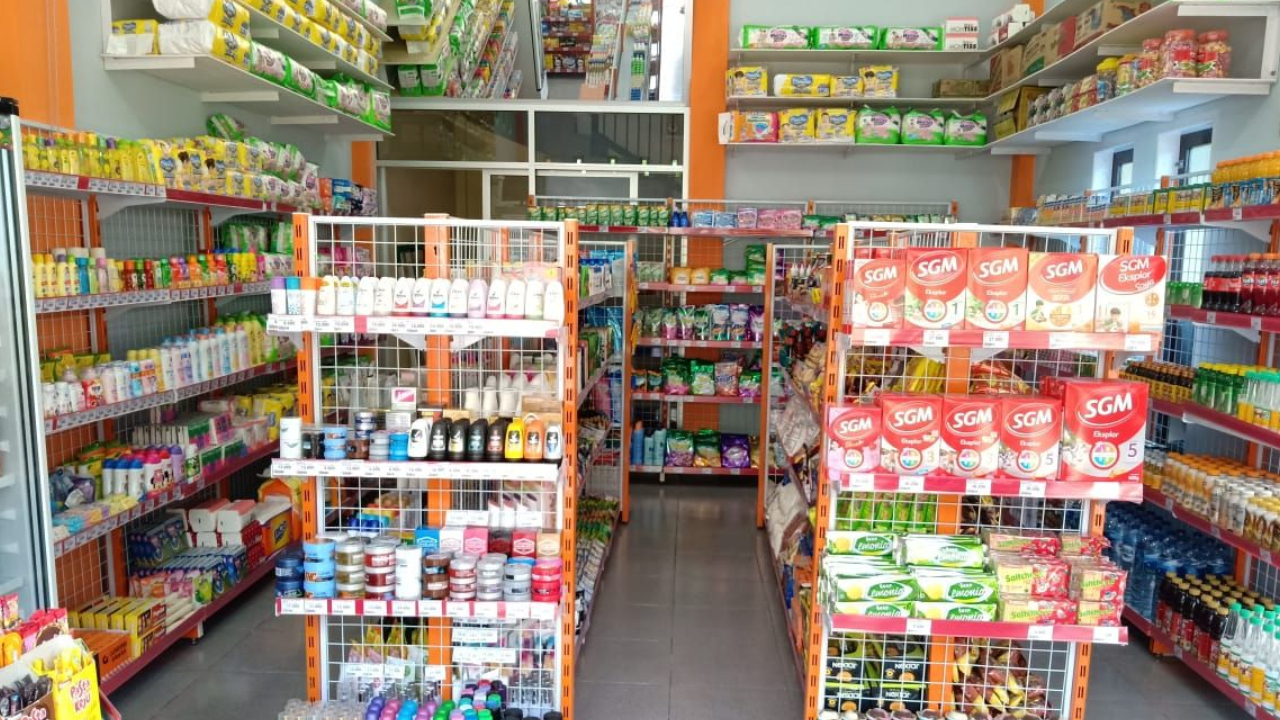Blog
Mini Grocery Store Budget: Planning for a Profitable Startup

The Ultimate Guide to Budgeting for a Mini Grocery Store
Opening a mini grocery store can be a lucrative and rewarding business venture, but it requires careful planning and smart financial management. With the right strategy, a small grocery store can thrive, particularly in urban areas with high foot traffic. Offering essential goods under one roof ensures a steady demand and builds customer loyalty.
The key to success lies in proper budgeting, as it plays a crucial role in maintaining financial health. A well-structured budget not only helps in day-to-day operations but also strengthens financial statements, which is essential if you ever need a business loan or credit line from a bank.
This guide will walk you through the process of budgeting for a mini grocery store, covering everything from initial investments to recurring expenses, ensuring profitability and long-term sustainability.
1. Understanding the Business Model of a Mini Grocery Store
A mini grocery store is a small-scale retail shop located within residential or semi-commercial areas, catering to the daily needs of the local community. Unlike large supermarkets, these stores focus on high-demand, fast-moving consumer goods (FMCGs) and perishables, making them a convenient option for customers.
Key Characteristics:
Product Range: Stocking FMCGs like packaged food, beverages, cleaning supplies, fresh fruits, vegetables, and dairy products.
Strategic Location: Situated in high-footfall areas such as residential neighborhoods or near busy streets.
Lower Operational Costs: Smaller spaces mean reduced rent, utility expenses, and staffing costs compared to supermarkets.
Profitability Factors:
Consistent Demand: Groceries are everyday necessities, ensuring steady customer flow.
Low Entry Barrier: Starting a mini grocery store requires lower capital compared to other businesses.
Scalability: Once profitable, you can expand to multiple locations or even introduce a franchise model.
2. Initial Budgeting
Setting up a mini grocery store requires several upfront investments. Let’s break down the key cost components:
A. Renting or Purchasing a Shop Space
Location is one of the most critical factors influencing sales. Your store should be easily accessible, visible, and ideally, have parking space.
Monthly rent: ₹20,000 - ₹50,000 (depending on location)
Security deposit: 2-3 months’ rent (e.g., if rent is ₹40,000, the deposit will be ₹80,000 - ₹1,20,000)
Purchasing a shop: ₹15,00,000 - ₹50,00,000 in semi-urban areas
Recommendation: Start with a rented space to minimize upfront costs and ensure lease flexibility.
B. Store Setup & Renovation
A well-organized, visually appealing store enhances customer experience and increases retention.
Shelving & Interiors: ₹70,000 - ₹2,00,000 for modular shelves, racks, and display units.
Signage & Branding: ₹7,000 - ₹20,000 for external signage and store branding.
Flooring & Painting: ₹15,000 - ₹70,000, depending on materials.
Lighting & Fixtures: ₹7,000 - ₹25,000 for bright, energy-efficient lighting.
C. Equipment Purchase
Refrigeration units: ₹25,000 - ₹1,50,000 (for dairy, meat, frozen goods)
Security cameras: ₹8,000 - ₹30,000
Air conditioning: ₹20,000 - ₹60,000 (optional)
POS system (billing): ₹20,000 - ₹50,000
Barcode scanners & printers: ₹5,000 - ₹20,000
Tip: Consider purchasing second-hand equipment to reduce costs without compromising quality.
D. Inventory Procurement
Your initial stock investment depends on store size and product variety.
Estimated inventory cost: ₹1,00,000 - ₹3,00,000
Key categories:
Packaged food (rice, pulses, flour, spices)
Fresh produce (fruits, vegetables, dairy)
Household essentials (cleaning supplies, toiletries)
Advice: Start small and scale inventory based on customer demand and sales trends.
E. Licensing & Permits
Trade License: ₹1,000 - ₹7,000
FSSAI License: ₹5,000 - ₹10,000
GST Registration: Free (third-party fees may apply)
Tip: Research local regulations to ensure full compliance and avoid fines.
F. Marketing & Branding
Marketing helps attract customers and establish your brand.
Flyers & Pamphlets: ₹5,000 - ₹15,000
Digital Marketing: ₹5,000 - ₹10,000 per month
Recommendation: Leverage free platforms like Facebook & Instagram for organic promotions.
3. Recurring Expenses
Once your store is operational, recurring costs must be carefully managed.
A. Rent & Utilities
Rent: ₹20,000 - ₹50,000 per month
Electricity & Water: ₹5,000 - ₹10,000 per month (higher if refrigeration is extensive)
Internet: ₹1,000 - ₹3,000 per month
B. Salaries & Wages
Employee salary: ₹7,000 - ₹20,000 per employee (2-3 employees recommended)
Bonus & incentives should be budgeted separately.
C. Inventory Replenishment
Monthly stock replenishment: ₹20,000 - ₹1,50,000 (depends on sales volume)
D. Maintenance & Promotions
Store upkeep: ₹2,000 - ₹5,000 per month
Marketing & discounts: ₹10,000 - ₹50,000 per month
4. Revenue Generation & Profitability
A. Revenue Streams
Sales from daily grocery items
Value-added services (home delivery, bulk discounts, local supplier tie-ups)
B. Gross Profit
Target a 25-30% gross profit margin.
If monthly sales are ₹1,00,000, the expected profit is ₹25,000 - ₹30,000.
C. Break-Even Analysis
Break-even point = Fixed Cost / Gross Profit Margin
For example, if your fixed cost is ₹1,00,000 and gross profit margin is 25%, you need monthly sales of ₹4,00,000 to break even.
5. Operational Strategies for Long-Term Success
Optimize Inventory: Use POS software to track stock levels and avoid overstocking.
Customer Engagement: Offer loyalty programs and discounts.
Efficient Staffing: Train employees for multi-tasking to reduce labor costs.
Technology Adoption: Implement digital payments and self-checkout options.
6. Scaling & Growth Strategies
Expand product range with organic and specialty items.
Replicate the business model in new locations.
Offer franchise opportunities.
Introduce online shopping and home delivery via a website or app.
Partner with grocery delivery platforms like Blinkit or Swiggy.
Final Thoughts
Starting a mini grocery store requires careful budgeting and planning. By strategically managing expenses, optimizing revenue, and continuously improving operations, you can build a profitable and sustainable business.
With dedication and smart execution, your store can become a trusted name in the community, ensuring long-term growth and success!